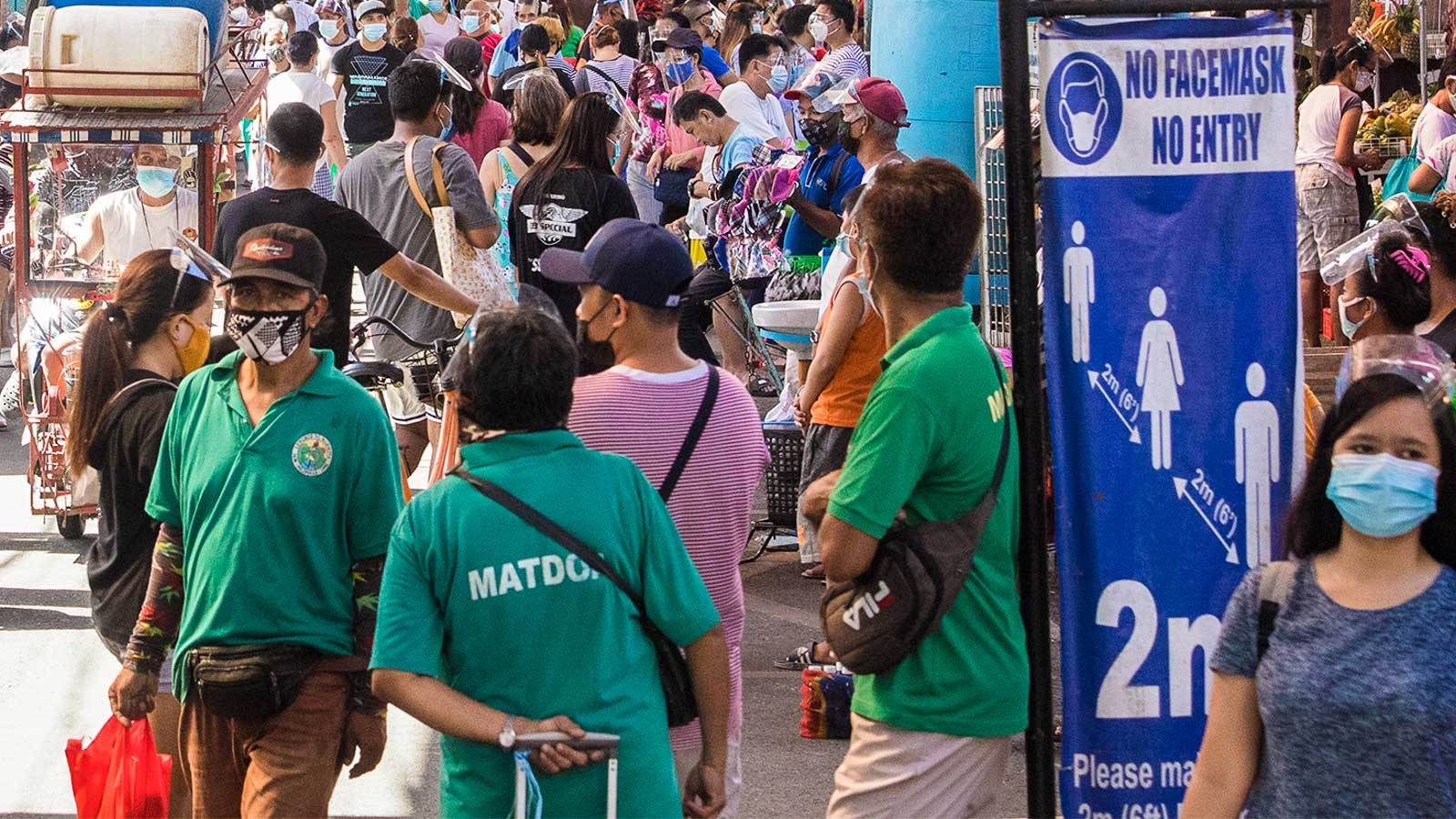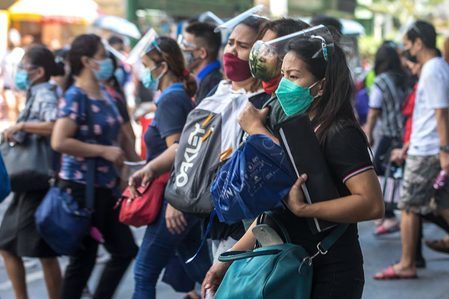SUMMARY
This is AI generated summarization, which may have errors. For context, always refer to the full article.

More than a year into a raging pandemic, the Department of Health (DOH) released a new alert classification system to identify the severity of COVID-19 incidence in different areas in the Philippines.
“The reason why we set alert levels is that because we are in a crisis and we need immediate decision and action from the government. These alert levels will give triggers on how we should respond and to determine the flagged areas,” Health Undersecretary Maria Rosario Vergeire said in a mix of English and Filipino on Friday, August 6.
The health spokesperson said that the DOH devised the new classifications because there are areas that have high number of cases but low healthcare utilization rates, and vice versa.
“For us to balance that, and for us to give appropriate signals and flagging to officials, we made the new classification system,” Vergeire said.
The new classification system has four alert levels. An area will be classified based on their case transmission, healthcare utilization rate, and the presence of the highly infectious Delta variant.
Here are the four alert levels and what they mean:
Alert level 1
Areas under this alert level are those with low and decreasing case transmission, low healthcare utilization, and no reported case of the Delta variant. For an area to be classified under this level, it must meet all the following conditions:
- Risk class: minimal to low risk, with negative growth rate
- COVID-19 bed utilization and intensive care unit (ICU) utilization must be less than 50%
- No local case of Delta variant detected
Alert level 2
Areas under this alert level are those with low and decreasing case transmission, low healthcare utilization, but with reported case/s of the Delta variant. An areas can also fall under this alert level if its case count is low but increasing, or its case count is low and decreasing but healthcare utilization rate is increasing. For an area to be classified under this level, it must meet any of the following conditions:
- Risk class: minimal to low risk, with negative growth rate; COVID-19 bed and ICU utilization must be less than 50%; and with reported local Delta variant case/s
- Risk class: minimal to low risk, with positive growth rate
- Risk class: minimal to low risk, with negative growth rate and COVID-19 beds and ICU utilization must be greater than or equal to 50%
Alert level 3
Areas under this alert level are those with high case count and/or increasing cases but with increasing healthcare utilization, regardless of the presence of Delta variant. For an area to be classified under this level, it must meet all the following conditions:
- Risk class: moderate to critical
- COVID-19 bed utilization or ICU utilization rate must be less than or equal to 70%, regardless of the presence of the Delta variant
When an area is under this alert level, the government must address the increasing cases and increasing healthcare utilization rates by doing the following:
- Implementation of granular or localized lockdowns
- Active case finding for areas with local Delta variant cases (rapid antigen test can be used)
- Decongesting hospitals of mild and asymptomatic cases; increasing COVID-19 dedicated beds to 30%; increasing ICU beds for COVID-19 in Level 2 and Level 3 hospitals
- Addressing healthcare capacity issues on the local, regional, and national level
Alert level 4
Areas under this alert level are those with high case count and/or have high healthcare utilization rates, regardless of the presence of Delta variant. For an area to be classified under this level, it must meet all the following conditions:
- Risk class: moderate to critical
- COVID-19 bed utilization or ICU utilization rate must be greater than to 70%, regardless of the presence of the Delta variant
When an area is under this alert level, the government must address the increasing cases and increasing healthcare utilization rates by doing the following:
- Implementation of granular or localized lockdowns
- Active case finding for areas with local Delta variant cases (rapid antigen test can be used)
- Increasing hospital beds urgently, especially ICU bed capacity of Levels 2 and 3 hospitals; ensuring oxygen tanks are sufficient and available; ensuring severe and critical cases are immediately and properly referred
- Addressing healthcare capacity issues on the local, regional, and national level
It remains unclear how the alert level classifications of each area in the Philippines would be announced, but the first set of classifications was announced on Friday during the weekly press briefing where Vergeire gave updates on the pandemic situation.
Vergeire said that as of August 6, 37 areas have been placed under alert level 4 while 42 areas have been placed under alert level 3.
The Delta variant, which was first detected in India, is ravaging Southeast Asian countries like Indonesia, Thailand, and Malaysia. Meanwhile, the Philippines is starting to feel another surge of COVID-19 infections possibly fueled by the more contagious Delta variant.
As of August 6, the Philippines has 450 known cases of the highly transmissible Delta variant, but there were concerns that the actual number may be higher, as the Philippine Genome Center could only sequence a small percentage of the positive cases. – Rappler.com
Add a comment
How does this make you feel?

There are no comments yet. Add your comment to start the conversation.